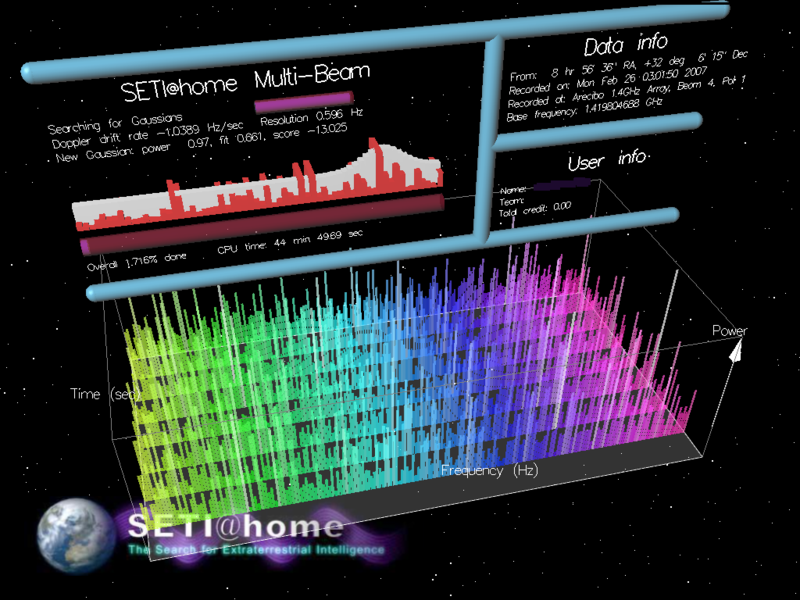The search for extraterrestrial intelligence (SETI) is the collective name for a number of activities undertaken to search for intelligent extraterrestrial life. SETI projects use scientific methods in this search. For example, electromagnetic radiation is monitored for signs of transmissions from civilizations on other worlds. Some of the most well-known projects are run by Harvard University, the University of California, Berkeley, or the SETI Institute. In 1995, the United States federal government ceased funding to SETI projects, forcing them to turn to private funding to continue the search, though in recent years, government funding of SETI has resumed at modest levels.
There are great challenges in searching the cosmos for signs of intelligent life, including their identification and interpretation. SETI projects use the best available scientific knowledge to conduct experiments, which has traditionally led to searches for electromagnetic radiation emitted by advanced technologies. Radio telescopes are used to investigate the cosmos using large radio antennas. A 1959 paper explored the possibility of searching the microwave spectrum. In 1960, the first modern SETI experiment was done with a 26 meter radio telescope. The first SETI conference took place in 1961. The Soviet scientists took a strong interest in SETI during the 1960s and performed a number of searches with omnidirectional antennas. In 1979 the University of California, Berkeley, launched a SETI project. In 1986, UC Berkeley initiated their second SETI effort. The university began an all-sky survey using the Arecibo radio telescope in March 2014.
In the early 1980s, physicist Paul Horowitz proposed the design of a spectrum analyzer to search for SETI transmissions on 131,000 narrow band channels. In 1985 by Project “META” analyzed 8.4 million channels. The follow-on to META was commenced observation on October 30, 1995. In 1978, the NASA SETI program had been heavily criticized by Senator William Proxmire, and funding for SETI research was removed from the NASA budget by Congress in 1981. Funding was restored in 1982, after Carl Sagan intervened. Founded in 1994 in response to the US Congress cancellation of the NASA SETI program, The SETI League, Inc. is a membership-supported nonprofit organization. It pioneered the conversion of backyard satellite TV dishes 3–5 m (10–16 ft) in diameter into research-grade radio telescopes of modest sensitivity. SETI@home was conceived by David Gedye along with Craig Kasnoff and is a popular volunteer distributed computing project that was launched by the University of California, Berkeley, in May 1999. The SETI Institute collaborated with the Radio Astronomy Laboratory at UC Berkeley to develop a specialized radio telescope array for SETI studies, something like a mini-cyclops array.
As various SETI projects have progressed, some have criticized early claims by researchers as being too “euphoric”. SETI has also occasionally been the target of criticism by those who suggest that it is a form of pseudoscience. In particular, critics allege that no observed phenomena suggest the existence of extraterrestrial intelligence, and furthermore that the assertion of the existence of extraterrestrial intelligence has no good Popperian criteria for falsifiability.
